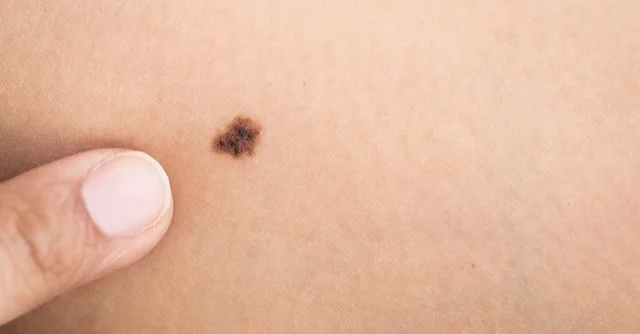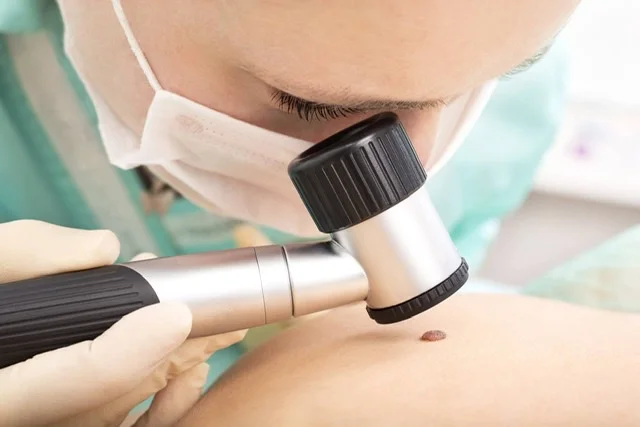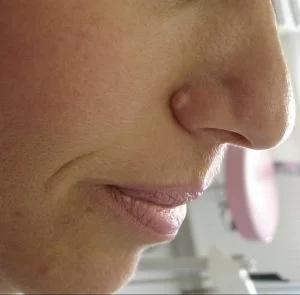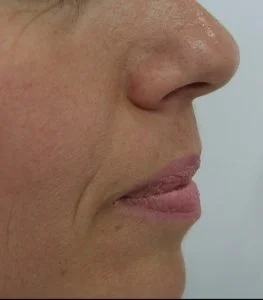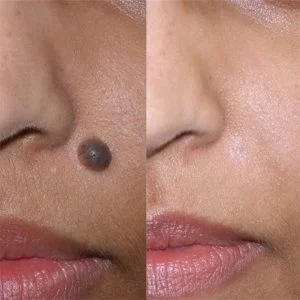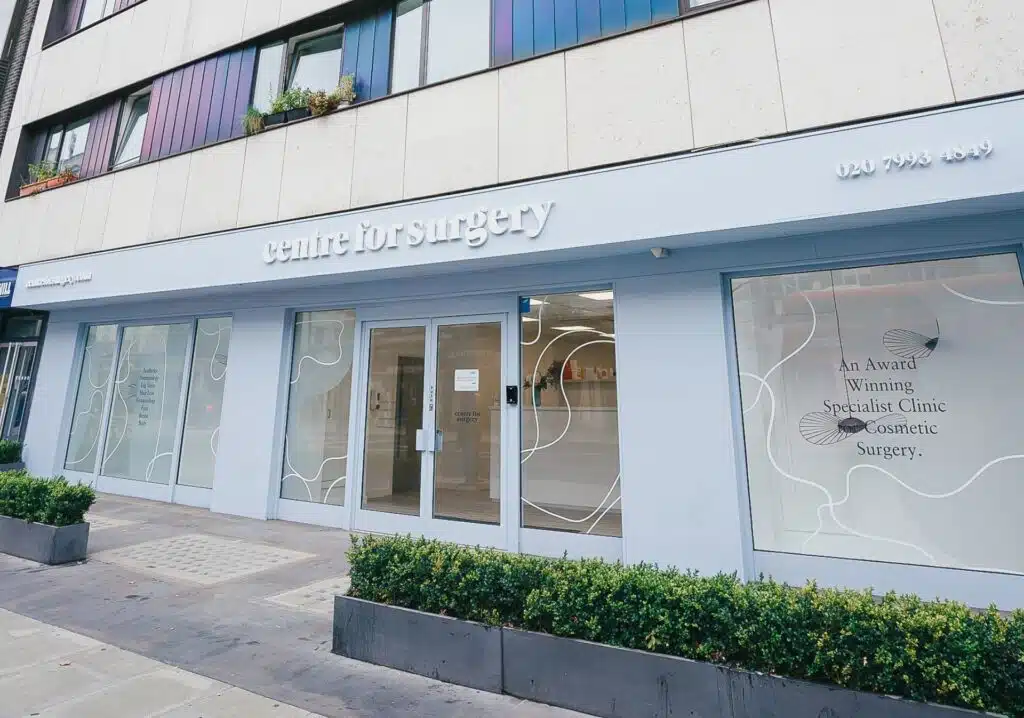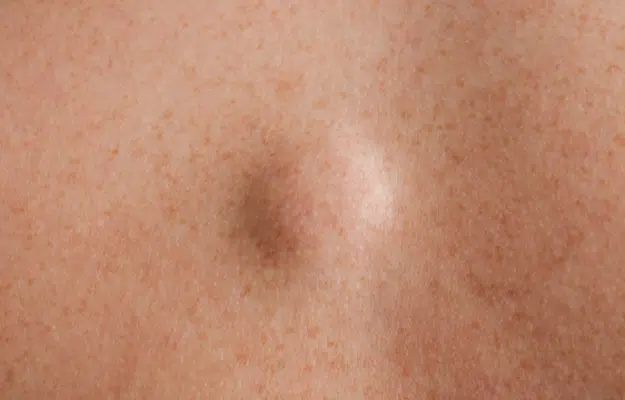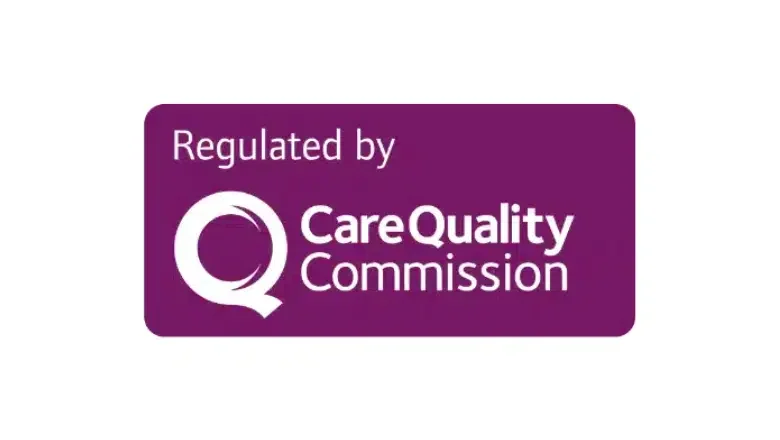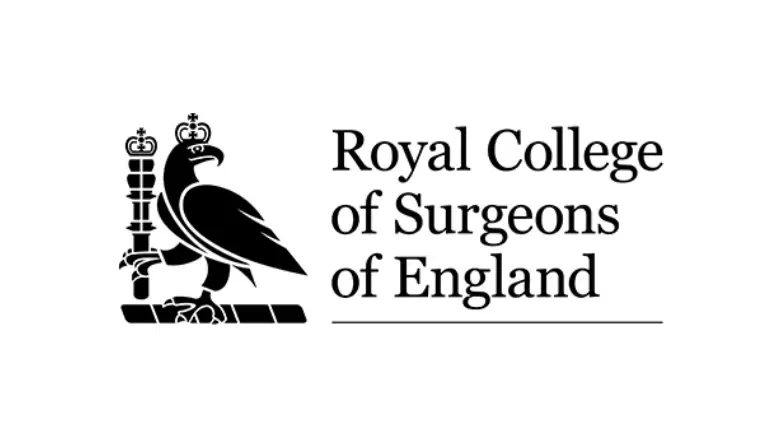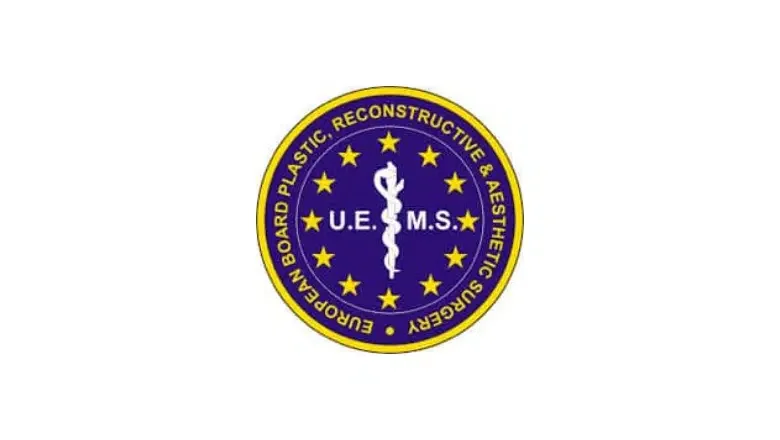Skin Mole Removal Surgery in London by Plastic Surgeons
Moles come in a variety of forms and can be found on nearly anyone, with about 1% of newborns having some type of mole right from birth. While most moles are benign and pose no serious health concerns, there are instances where moles can develop into melanomas, a form of skin cancer.
Considering the potential risk for malignancy, it’s often recommended to seek professional help to safely and effectively remove moles.
At Centre for Surgery in London, our specialist plastic surgeons are skilled in carrying out skin surgery, including mole removal procedures. Mole excision, a common method used to completely remove moles, is one of the procedures we offer at our clinic located on Baker Street.
RELATED: Why choose a plastic surgeon for mole removal?
Our team of experts is highly experienced in performing such procedures with precision and care, ensuring your peace of mind throughout the process. We understand the importance of thoroughness in mole removal, not just for cosmetic reasons but also to eliminate any potential health risks associated with these skin abnormalities. We are here to guide and assist you every step of the way.
What is a Mole?
A mole, medically known as a naevus (or naevi for multiple moles), is a benign, or noncancerous, skin growth. These are typically small in size, and can either be smooth or have a raised surface.
Moles commonly have a round or oval shape and are often pigmented, meaning they carry some colour – usually shades of brown, tan, black, red, pink, blue, or skin-toned. Some moles may even have a rough surface with hairs growing from them.
While it’s normal for individuals to have a single mole, it’s also possible for one to have multiple moles. On rare occasions, these moles can undergo changes in colour, shape, or form nodules. It’s important to consult your GP if you observe such changes, as these could be signs of malignant transformations that might lead to skin cancer.
RELATED: Skin Cancer Surgery
Moles typically appear later in childhood, though some are present from birth.
Scientifically, these skin growths are believed to occur due to anomalies during embryonic development. Melanocytes, which are cells responsible for producing melanin (the pigment that gives colour to our skin, hair, and eyes), are formed and move into the skin during this stage. Moles are hypothesised to be a result of errors in the formation, growth, or migration of these melanocytes.
What are the Different Types of Moles?
Moles come in different types and they can be broadly categorised into two main groups: congenital moles, which are present at birth, and acquired moles, which develop later in life.
Congenital Moles
Congenital moles are the ones that a person is born with. At birth, these moles are usually light in colour and may have a flat or slightly raised surface. As the individual grows older, the mole might become darker, larger, and may even develop long, coarse, dark hairs. Interestingly, some congenital moles may disappear on their own as the person ages. The most common type of congenital mole is the congenital melanocytic nevus.
Acquired Moles
These moles aren’t present at birth, but instead appear later on, often during late childhood or adolescence, though they can also develop in adulthood. Physically, it might be hard to tell the difference between acquired and congenital moles. Common types of acquired moles include junctional nevi, dermal nevi, and compound nevi.
Other Types of Moles
In addition to congenital and acquired moles, there are other types as well. For instance, an atypical or dysplastic nevus is a large mole with an irregular shape, known to increase a person’s risk of developing melanoma skin cancer.
Diagnosing Moles
A proficient skin specialist is crucial in diagnosing your mole correctly. They consider various primary and secondary characteristics of the mole to provide an accurate diagnosis.
The primary features of a mole are its visible characteristics. They include:
- The mole’s location on the body
- The size, shape, and overall appearance of the mole
- Whether it has smaller satellite moles around it
- The colour, presence of hair, and nature of its surface
To comprehend its secondary characteristics, a biopsy – a sample of the mole – will be sent to a laboratory for a detailed analysis. The findings from this analysis provide the specialist with further information to diagnose the mole accurately.
This comprehensive diagnosis is vital as it guides your doctor on the most appropriate method for treating or removing your mole. The specific procedure used to remove a mole depends on various factors, including the type and nature of the mole.
Moles can sometimes exhibit similar features to melanomas, a type of skin cancer. A thorough diagnosis is therefore crucial in distinguishing between benign (harmless) moles and potentially dangerous, cancerous moles.
You should never attempt to self-diagnose or remove a mole at home. This can lead to numerous undesirable complications and could potentially miss the diagnosis of a more serious condition.
Dangerous Moles – Identifying Risky Moles
Most moles are perfectly harmless. If you have one, there’s typically no reason to worry, and it’s unlikely to impact your health negatively.
However, there are instances where a mole could transform into a melanoma, a type of skin cancer. Although a specialist or surgeon can definitively assess your mole’s risk level, it’s also vital to be proactive about examining your skin regularly for any changes.
Here’s a more detailed version of the ‘ABCDE’ model, which you can use as a guide to look for potential signs of melanoma:
Asymmetry
When evaluating your mole for asymmetry, look closely to see if one half of the mole mirrors the other half. A benign mole will generally be symmetrical, meaning that if you were to draw a line through the middle of the mole, the two halves would be identical in shape, colour, and texture. In contrast, melanomas typically have asymmetrical halves. If one-half of your mole looks, feels or appears different from the other, it might warrant a closer look from a specialist.
Border
Examine the edges of your mole. Healthy moles tend to have smooth, even borders that are well-defined from the rest of the skin. On the other hand, melanomas often have irregular, jagged, or blurred borders. If the outline of your mole is not clearly defined, it’s a good idea to get it checked by a specialist.
Colour
Take note of the colour of your mole. Most benign moles are a single shade of brown. Melanomas, however, may contain several different colours or shades of a single colour, including brown, black, red, white, or blue. If your mole includes unusual colours, or if the colour seems inconsistent or irregular, you should consult a physician.
Diameter
Monitor the size of your mole. Benign moles are usually small, often less than 6 millimetres in diameter, about the size of a pencil eraser. Moles that are larger in diameter are more likely to be at risk for malignant transformation and should be examined by a specialist.
Evolving
Finally, pay attention to any changes in your mole over time. Important changes can include alterations in colour, shape, size, or texture, the development of itchiness or pain, the growth of hair, the onset of bleeding or oozing, and the formation of a nodule. Even minor changes can be significant, so monitoring your moles closely and regularly is important.
RELATED: Should I be Concerned About an Itchy or Bleeding Mole?
A mole is deemed risky if it contains precancerous or cancerous cells. If your mole exhibits any of these signs, it needs to be biopsied and removed immediately to prevent melanoma development. This process of preemptively removing a mole to prevent cancer is clinically referred to as prophylactic mole removal. Seek professional medical advice if you notice any changes or abnormalities in your moles.
Options for Cosmetic Mole Removal in London
When it comes to dealing with moles in London, you have a number of treatment options available. Broadly speaking, the primary goals of any mole treatment are:
- Ensuring pleasing aesthetic results
- Removing any potential risk of the mole transforming into cancer
- Preserving the proper function of the body part or organ where the mole is located
During your consultation, the specialist will assess your mole and recommend a suitable treatment method.
Here are some of the most commonly utilised mole removal techniques:
Surgical Excision
Surgical excision is a straightforward procedure often used for small moles. This method involves cutting out the mole from your skin, then stitching up the small wound left behind.
For larger moles, a more specialised excision may be needed. This could involve additional procedures like tissue expansion, serial excisions, skin grafting, or the use of biological agents to help regulate wound healing.
Small moles can usually be removed in just a few minutes. In contrast, larger moles might take a couple of hours to excise and may require more than one session.
Dermabrasion
Dermabrasion is a technique that scrubs away the upper layer of your skin (epidermis) and a portion of the layer beneath it (dermis). This method can effectively remove the superficial cells of a mole.
Shave Excisions and Curettage
These are minor surgical procedures used to “shave” or “scrape” off raised areas of skin, such as a protruding mole.
The mole removal process is tailored to each patient’s individual needs. To achieve the best cosmetic result, skin specialists might combine several treatment methods.
Factors that can influence the choice of treatment include the size of the mole, its location, its potential to turn malignant, its appearance, the ease of clinical follow-up, and the expertise and experience of the skin specialist or plastic surgeon.
The cosmetic results of mole removal are closely tied to the treating doctor’s expertise and the resources available at the health facility. That’s why we highly recommend having your mole removed by a highly skilled and experienced skin specialist at Centre for Surgery.
Your Journey to Mole Removal Surgery
First Meeting with Your Plastic Surgeon
If you have a small and uncomplicated mole, it can usually be removed in just a single visit to the doctor’s office. However, there might be instances where you need to come back for follow-up visits.
The very first step in this journey is arranging a consultation with your plastic surgeon.
During this initial meeting, several important things will take place. Firstly, your surgeon will take a detailed look at your medical history to ensure there are no underlying issues that could impact the surgery.
Next, the surgeon will perform a thorough examination of your mole and the surrounding skin. This is important for determining the best course of action for your particular mole.
The doctor will then walk you through the various mole removal options available. Depending on the size and nature of your mole, the surgeon may also suggest taking a biopsy of the mole. This involves collecting a small sample of tissue from the mole for lab testing to confirm whether it’s benign (noncancerous) or malignant (cancerous).
This initial consultation is an excellent opportunity for you to ask any questions you might have. You can discuss the specific mole removal procedures, the associated costs and any available financing options, recovery times, and anything else you might be curious about.
Mole Removal Procedure
The actual process of removing a mole is typically relatively quick – it takes less than 10 minutes for smaller moles. For larger or more complex moles, the procedure might take longer and you might need multiple treatments.
In most cases, mole removal is done under local anaesthesia, which means the area around the mole is numbed but you’re awake during the procedure. This ensures that you experience minimal discomfort or pain.
Once the mole has been carefully removed, the surgeon will close the wound. The method used to close the wound depends on the size and location of the removed mole. They might use sutures (stitches), graft tissue, tissue expanders, or various other techniques.
Finally, a bandage is applied to the area to keep it clean and protect it as it heals. Your doctor will provide you with instructions on how to care for the wound at home.
Recovery Process After Mole Surgery
After your mole removal procedure, your doctor will provide detailed instructions on how to take care of the wound to ensure it heals properly. These guidelines are crucial and should be followed to the letter.
In some cases, you might be requested to come back for a follow-up visit within one to two weeks after the treatment. This is to allow the doctor to check on your progress and ensure everything is healing as it should.
During the first one to five days following the procedure, it’s quite normal to experience a bit of tenderness or discomfort in the area where the mole was removed. Don’t worry – this is a common part of the healing process.
The great news is that recovery from mole removal is typically swift. This is because most mole removal procedures are minimally invasive, meaning they don’t involve deep cuts or significant tissue damage. As a result, you should be able to get back to your usual daily activities and routines within a week or two, depending on your body’s healing speed.
To minimise scarring after the surgery, your specialist will provide further instructions. It’s essential to:
- Keep the area clean and undisturbed: Avoid touching the treated area unnecessarily and make sure it’s kept clean at all times.
- Protect the area: Always keep the area covered to protect it from getting infected.
- Avoid stretching or applying pressure to the treated area: This can interfere with the healing process and may lead to more noticeable scarring.
- Limit exposure to direct sunlight: Sunlight can slow down the healing process and make scarring more noticeable.
- Follow your plastic surgeon’s advice on skin treatments: Certain treatments can promote faster healing and proper collagen production, which helps reduce scarring.
RELATED: How to Minimise Scars After Mole Removal
Remember, if you have any concerns or questions during your recovery, don’t hesitate to contact your surgeon.
Long-Term Results of Mole Removal
The healing process after a mole removal procedure typically occurs over a period of approximately one month. However, this duration may vary depending on the size and complexity of the mole. For instance, if the mole was quite large or required extensive, deep or multiple excisions, then the healing time may be extended.
Once the wound has completely healed, a scar may remain. This is a normal part of the body’s healing process and is nothing to worry about. In the majority of cases, this scar will gradually fade away naturally over the course of a year. The fading process can sometimes be slower or faster, depending on your skin type and how well you care for the area during the recovery period.
Therefore, about one year after your mole removal procedure, you can typically expect to see no visible trace of the mole on your skin. That said, the end result can vary from person to person. Some people may notice a slight change in the colour or texture of the skin where the mole once was, while others may find that their skin appears exactly as it did before they had the mole.
It’s important to remember that while mole removal aims to eliminate the mole and leave as little trace as possible, every individual’s skin heals differently. Therefore, the final appearance of your skin after the procedure will depend on your body’s unique healing process.
Make sure to continue caring for your skin even after it’s fully healed. This includes protecting it from the sun, keeping it clean, and maintaining a good skincare routine. If you notice any unusual changes in the area where the mole was removed or anywhere else on your skin, be sure to consult your doctor promptly.
Mole removal before and after
Case 1:
Laser removal of mole on side of nose.
Case 2:
Laser removal of mole on face.
How much is Mole Removal Surgery in London?
The cost of mole removal surgery in London can vary greatly based on several factors. These include:
The number of moles to be removed
The more moles you need removed, the higher the procedure cost will likely be.
The size and complexity of the moles
Large or complex moles that require a more involved procedure will typically be more expensive to remove than small, simple ones.
The technique used for removal
Different removal methods come with different costs. For example, surgical excision might be more costly than a less invasive method like shave excision or laser removal.
RELATED: Can I get mole removal on the NHS?
Given all these factors, providing a specific cost without a consultation isn’t easy. However, it’s crucial to remember that the safety and effectiveness of the procedure should be the primary considerations, not just the cost of proceeding with the procedure. It’s best to have a consultation with your chosen specialist. During this consultation, they can provide a detailed breakdown of the costs based on your specific needs and circumstances. Be sure to ask about all possible costs upfront to avoid any surprises later on.
Mole Removal Surgery at Centre for Surgery
At Centre for Surgery, we provide a level of service that stands out in the field of mole removal and cosmetic procedures. Here are some reasons why choosing us for your mole removal surgery might be the best decision for you:
Experienced Team
Our team consists of highly skilled and experienced plastic surgeons who specialise in mole removal and other skin procedures. They have years of training and practical experience, ensuring your mole removal procedure is carried out to the highest standards.
Tailored Approach
We understand that every patient is unique, and so are their needs and expectations. That’s why we provide a tailored treatment plan designed specifically for each individual. This personalised approach ensures optimal results and patient satisfaction.
State-of-the-art Facilities
We offer state-of-the-art facilities that are equipped with the latest technology. This ensures the best possible outcomes and a safe environment for all procedures.
Comprehensive Care
We provide comprehensive care to our patients, from initial consultation to post-surgery follow-up. Our dedicated team will support you throughout your journey, ensuring your comfort and answering any queries you might have.
Quality Patient Care
Patient safety and satisfaction are our top priorities. We are committed to delivering the highest quality care, with a focus on patient safety, comfort, and satisfaction.
Transparent Pricing
Our pricing is clear and upfront, with no hidden costs. We provide you with detailed cost information prior to your procedure, allowing you to make an informed decision.
Convenient Location
Our centre is located in London, making it easily accessible for patients across the UK.
Exceptional Aftercare
We pride ourselves on our comprehensive aftercare programme. We provide detailed instructions for your recovery and make follow-up appointments to ensure progress.
At Centre for Surgery, we strive to provide the highest standard of care and results that meet and exceed your expectations.
FAQs
-
What does mole removal involve?Mole removal first involves the injection of local anaesthetic to numb the treatment area. Moles that are entirely benign in nature can be effectively removed using erbium laser which does not involve any incisions or stitches.
Most mole removals are carried out surgically. After your doctor has carefully examined the mole, the treatment area is clean before the placement of sterile surgical drapes to minimise the risk of infection. The surgeon will then surgically remove them all using an elliptical incision which is then closed with sutures. The removed tissue is placed into a specimen pot and sent to the pathology laboratory for further analysis. A sterile dressing is applied to the area of surgery and you will have a postoperative wound check at one week. -
Can I remove my mole at home?Attempting to remove a mole at home carries significant risks, including excessive bleeding, potential infections, and severe scarring. Additionally, if the mole is not entirely removed, it could regrow. If the mole were cancerous, at-home removal might give the cancer cells an opportunity to spread and proliferate. Consequently, removing a mole at home is unsafe and highly discouraged.
-
Is mole removal effective?Yes, mole removal is generally very effective. After a mole has been surgically removed, it is very unlikely that it will return as long as all the mole cells were successfully removed. However, it's important to note that in some rare cases, if some mole cells were accidentally left behind, a mole may reappear in the same place.
Moreover, mole removal is not just about getting rid of the mole for cosmetic purposes or comfort (for example, if the mole was in a place where it was frequently rubbed by clothing). It's also an effective method to prevent or address potential health risks. Some moles may develop into skin cancer (specifically, melanoma), so their removal can be a crucial preventative measure.
After mole removal, the removed tissue is typically sent to a laboratory for microscopic examination to confirm whether it was benign (non-cancerous) or malignant (cancerous).
Although mole removal is effective, it is a surgical procedure that may leave a scar. The size and visibility of the scar depend on several factors, including the size, depth, and location of the mole, the specific removal technique used, and how well your skin heals. -
Can you remove moles on the face?Moles are a common skin growth that can be either flat and coloured, or raised from the skin. Their presence on our skin is entirely normal, but for some people, especially if these moles are located on the face, they can lead to feelings of self-consciousness. In these cases, people often opt for mole removal for purely aesthetic reasons.
We have highly skilled plastic surgeons who are adept at mole removal, ensuring that the procedure leaves minimal scarring on your face.
However, not all moles are harmless. There are times when a mole can start to change in colour, size, and shape. These are potentially warning signs of cancer, and if you observe such changes, it's crucial that you consult a dermatologist as soon as possible.
When it comes to the procedure for facial mole removal, it's carried out under local anaesthesia. This means an injection is administered to numb the area surrounding the mole. Following this, the mole is surgically removed. The excised tissue is then sent for pathological examination to ensure there are no signs of malignancy.
After removal, the small skin defect left behind is stitched up meticulously. These stitches are typically removed after a period of 5-7 days. The resulting linear scar from the surgery will gradually fade over time, leaving a barely noticeable mark on the skin. -
What happens during a mole removal?During a mole removal procedure, the area around the mole is first numbed with a local anaesthetic. This helps to ensure that you don't feel any pain or discomfort during the procedure.
Once the area is numbed, the surgeon will clean the area and place a surgical drape around it. This helps to maintain a sterile environment and reduce the risk of infection.
The surgeon will then use a surgical tool to cut around the mole. This is typically done in an oval shape, as this allows the surgeon to remove all of the mole and minimises the risk of leaving any mole cells behind. The removed mole will be placed in a specimen jar and sent to a lab for analysis. This is done to determine if the mole was benign or malignant.
After the mole has been removed, the surgeon will close the wound. This is typically done using stitches, although the exact method used can depend on the size and location of the mole.
Finally, the surgeon will cover the wound with a dressing. This helps to protect the wound, keep it clean, and promote healing.
Mole removal is usually a very quick procedure, often taking less than half an hour. After the procedure, you will be given instructions on how to care for the wound and what signs of infection to look out for. -
Does mole removal hurt?Mole removal typically does not hurt due to the use of local anaesthesia prior to the procedure. This numbs the area around the mole so you won't feel any pain during the removal.
However, you might experience some discomfort or a slight pinching sensation when the anaesthetic is being injected. Once the anaesthesia takes effect, you should not feel anything more than pressure or movement in the area.
After the procedure, as the anaesthetic wears off, you may feel some tenderness or discomfort at the removal site. Over-the-counter pain relievers can usually manage this. Also, your doctor will provide aftercare instructions to help minimise any discomfort and to ensure a smooth healing process.
If you have concerns about pain during the procedure, be sure to discuss these with your doctor or surgeon before the procedure. They can help address your concerns and explain what you can expect during and after the mole removal. -
How long does mole removal take?The duration of a mole removal procedure typically doesn't exceed 30 minutes. However, the exact length of the procedure can depend on various factors such as the size and location of the mole, the method of removal being used, and whether a biopsy is needed. In most cases, mole removal is a relatively quick and straightforward procedure that can be done in an outpatient setting.
-
What is the recovery like after mole removal?After a mole removal procedure, recovery is typically quick and uncomplicated. You may experience mild discomfort, swelling or redness in the area where the mole was removed, but these symptoms usually subside within a few days. Your surgeon will give you specific instructions on how to care for the wound, which often involves keeping the area clean, dry, and protected from the sun.
You might be asked to return to the clinic for a follow-up visit within 1-2 weeks, during which any stitches may be removed and the healing process assessed.
While most patients can return to their normal activities within a week or two, you should avoid strenuous activity or anything that might stretch or disturb the wound until it's fully healed. Scarring is usually minimal, but it can take several months to a year for any scar to fade completely. -
Does mole removal leave a scar?A mole, also known as a naevus, is composed of naevus cells that extend throughout the entire depth of the skin. Consequently, a full removal of a mole will inevitably result in a void or a hole in the skin. No matter how this void heals, a scar is inevitable. Our task as professionals is to ensure that this scar is as minimal and unnoticeable as possible.
If the mole is relatively small, allowing the void to heal naturally might be the best course of action. In other scenarios, the void left by the mole removal is often reshaped to facilitate suturing. This is usually done in a direction that aligns with the natural skin tension lines, such as the smile lines on the face, to minimise visible scarring. On the face, stitches can be removed early to prevent additional scar formation. However, in other body parts, we may employ buried dissolving sutures reinforced with medical tape to avoid any visible stitch marks.
In cases where the mole is problematic only due to its raised profile, options such as snipping or laser removal can be used. However, it's important to remember that while these methods flatten the skin, they only remove the upper half of the mole. There's a chance that the remaining portion of the mole might regrow, potentially causing pigmentation or a patchy scar. This is often not desirable, especially for facial moles. In case of hairy moles, complete removal is necessary to prevent hair from regrowing from deep hair follicles. If a mole is suspected to be malignant, it must be excised entirely to allow for pathological diagnosis.
Regardless of the method of removal used, keep the skin clean to prevent infections that could worsen the scar. Antibiotics should not be used as a preventive measure against infection; instead, they should be reserved for treatment if an infection occurs. -
Will the mole need to be sent to a lab?This will vary for each person. During your consultation, the surgeon will be able to determine whether or not the mole is deemed suspicious. If the mole appears suspicious, it will be sent to a lab for further testing. Results from this may take around one week to return. Your GP will be told when your results are available.
-
What is the best way to reduce my risk of skin cancer?There are several steps you can take to lower your risk of skin cancer.
Minimise UV radiation exposure
When out in the sun, always use sunblock that protects against both UVA and UVB rays (known as broad-spectrum sunblock).
Ensure your sunblock is at least SPF 30 and offers ample UVA protection as indicated by the UVA symbol, applying it thickly and frequently.
Steer clear of sunbeds. The risk of melanoma, a type of skin cancer, can increase by almost 50% if you start using sunbeds before you turn 30.
Carry out a self-examination of your skin every month, checking for the ABCDE of moles.
The ABCDE checklist for potentially worrisome features:
Asymmetry: Irregularly shaped moles with two different halves.
Border: Moles with uneven edges.
Colours: Moles displaying a mix of two or more colours.
Diameter: Moles bigger than 6mm (1/4 inch) in diameter.
Evolution: Moles that have grown or altered in shape over time.
To perform these monthly checks effectively, do it after a bath or shower in a brightly lit room. Use a full-length mirror to help you thoroughly inspect any changes in moles.
You can also use the Melanoma Risk Factor Assessment checklist to determine if you should seek a professional mole check or conduct more frequent self-examinations.
The Melanoma Risk Factor Assessment:
Have you ever been badly sunburnt?
Does your skin initially burn and then tan? Do you tan at all?
Do you have any outdoor hobbies?
Have you ever used sunbeds?
Have you ever lived in a very hot/sunny foreign location?
Have you ever had an outdoor job?
Has anyone in your family ever had melanoma?
Do you wear sunblock when out in the sun?
If you notice any changes in a mole or an area of your skin, it's crucial to consult your GP or a plastic surgeon promptly. If your regular GP has any concerns about changes in your moles, they will refer you to a consultant plastic surgeon for a more detailed examination.
Not all changes in moles indicate skin cancer. It's normal for moles to change in size, number, or appearance over time – some may even vanish. Hormonal fluctuations, like those during puberty or pregnancy, can lead to an increase in mole count or cause them to darken. -
Can I get mole removal on the NHS?The NHS in the UK has policies that limit removal of non-cancerous moles due to cost-saving measures. If a mole is not cancerous or posing a serious health risk, it's often classified as a cosmetic procedure and not covered by the NHS. This means that if you want to have a mole removed for aesthetic reasons or because it causes discomfort (but is not a health risk), you may need to pay for the procedure privately.
If a mole is suspected to be malignant (cancerous) or precancerous, the removal would be considered medically necessary and should be covered by the NHS. However, waiting times can vary widely depending on the specific NHS Trust and the urgency of the case. Discuss this with your GP, who can provide guidance based on the specifics of your situation. -
Is there a chance my mole will regrow after removal?In rare cases, some mole cells may remain following the initial removal process. If this occurs, the mole might regrow.
-
Can moles become cancerous?The majority of people have moles that don't cause any issues throughout their life. However, if you observe any changes in a mole, it's a good idea to get it checked by a plastic surgeon or doctor as part of a mole examination to ensure it's not cancerous.
Skin cancer encompasses several types, including melanomas, basal cell carcinomas, and squamous cell carcinomas. Moles can also be pre-cancerous lesions - these are changes that aren't cancerous at present, but may turn into cancer over time.
On a positive note, skin cancer can be effectively treated and cured if it's detected and addressed early. This highlights the importance of regular skin and mole checks for early identification and intervention. -
What happens if I have an itchy mole or bleeding mole?If you have an itchy or bleeding mole, it is imperative to seek medical attention as soon as possible. These symptoms could be indicators of changes happening within the mole, such as potential malignancy or skin cancer.
In some cases, an itchy or bleeding mole might be due to irritation from clothing or a minor injury. However, it's always safest to get it checked by a healthcare professional to rule out any serious conditions.
During your appointment, your doctor will carry out a thorough examination of the mole and your skin. They might use a tool called a dermatoscope, which allows them to look at the mole in greater detail. Depending on the findings, they may decide to take a sample (biopsy) of the mole for further analysis under a microscope.
If the mole is found to be cancerous, it will be surgically removed. The procedure for this usually involves local anaesthesia to numb the area, after which the mole and a small margin of skin around it will be excised to ensure all potentially cancerous cells are removed. The wound is then closed with stitches.
Not all itchy or bleeding moles are cancerous, but it's always important to get them checked to ensure your health and safety. -
How much does mole removal surgery cost?The expense of mole removal in the UK generally starts from around £500. However, the final cost can change depending on the removal technique used and any additional treatments needed. Your healthcare provider can offer guidance on whether your health insurance covers mole removal procedures. Additionally, you can explore different financing options available.

